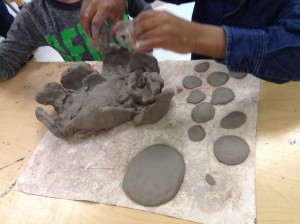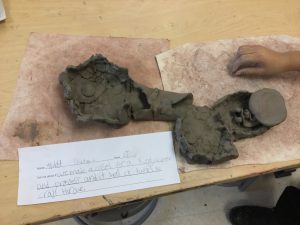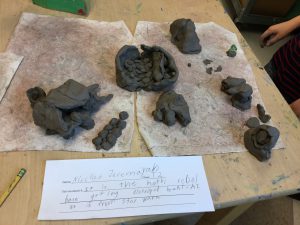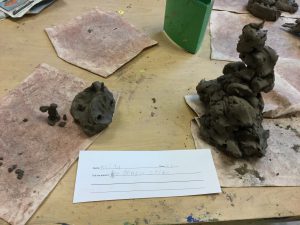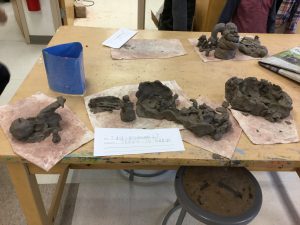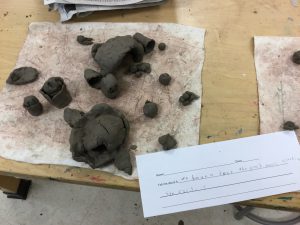Clay is about translating ideas into form and texture. Each part of an object is a form, and forms can be large or small, rough or smooth, thick or thin, flat or more three-dimensional. Students learn to use their fingers and clay tools to change the form and texture of the clay. They also learn to use weight, balance, and effective construction techniques to insure that their sculptures will stay together throughout the drying and firing process. The challenge for students is to figure out their own ways to use all of these elements in their sculptures.
Kindergarten
Exploration:
• What will you build with your partner?
• Will you pinch some parts to make them tall?
• Will you press some parts down to make them low?
• Will you make holes or tunnels with your fingers?
• Will you add on parts?
|
First Grade
Collaboration and Exploration:
- How can you use your hands to change the clay?
- What can you build with your partner?
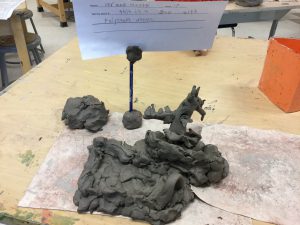 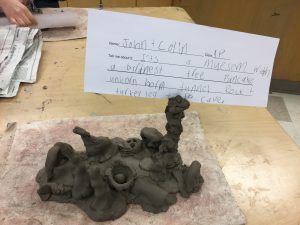 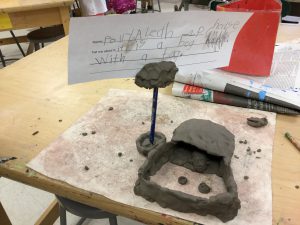 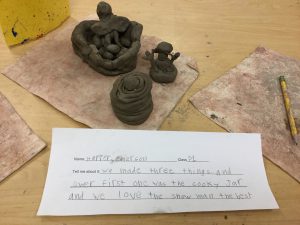  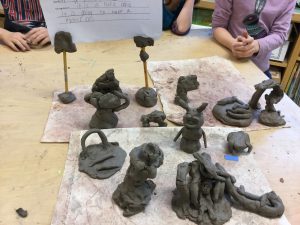
Joining parts:
- What kind of animal will you build?
- What kinds of parts does your animal have?
- How many legs will you need to build?
- What kinds of forms will you build for the head and body?
- What kind of ears does your animal have?
- Do you need to make a tail?
|
|
Relationships in space:
- How do animals take care of their babies?
- How big will the parent animal be, and how big will the baby be?
- How close will the animals be to each other?
- Will they be touching each other?
- Will you build a habitat for them?
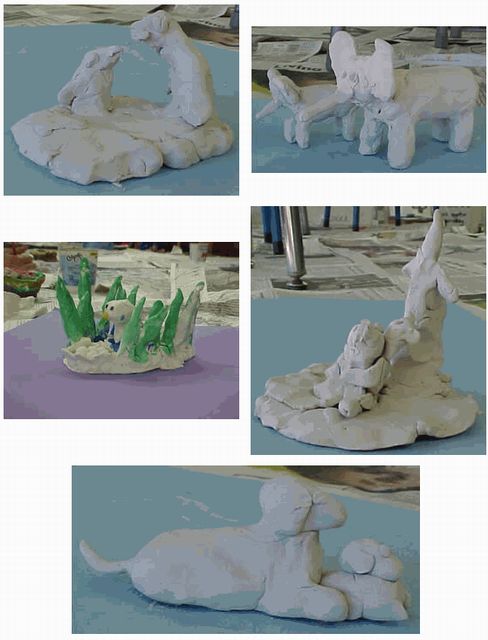
|
|
Third Grade
Relationships in space:
- What kind of parts do you need to make for your animal?
- Where does your animal live?
- How big will your animal be in it's habitat?
- What kind of terrain will you build for the habitat?

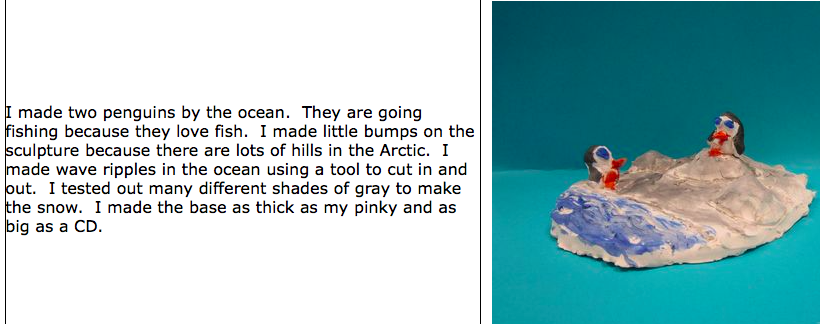
|
|
Gesture and relationships in space:
- What will your clay people be doing?
- What parts of their bodies will be bending?
- What will you build to show where the action is happening?

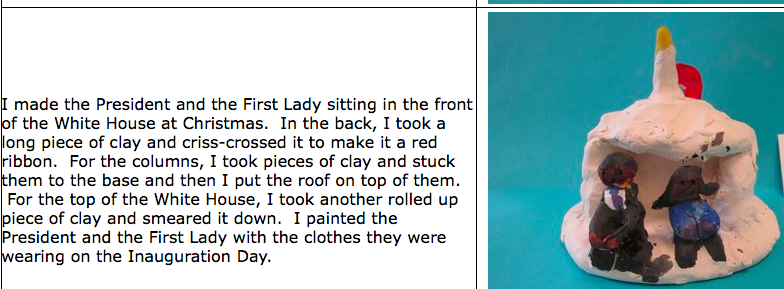
|
Relief:
- What do you like to do outside in the winter?
- What will be in front, and what will be behind?
- How do you show that things are near and far?
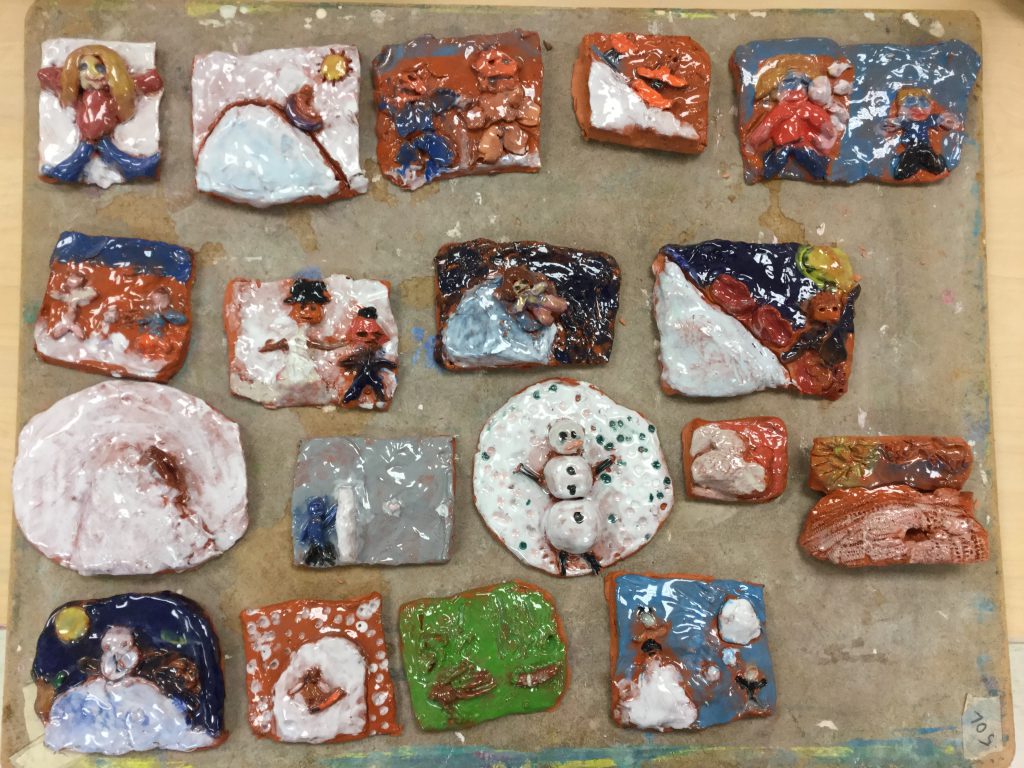
|
Fourth Grade
|
Clay Teamwork:
|
- What can you do with your hands to change the clay?
- How can the whole class work together to make one big connected sculpture?
- What happens when you poke, pinch, pull, roll, and connect pieces of clay?
- When you move to another section of the sculpture, how can you elaborate or add onto what somebody else started?
- How does one idea lead to another?
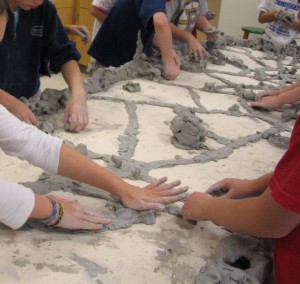 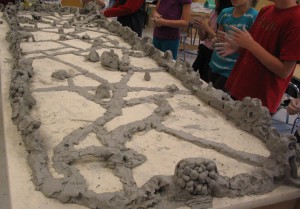
|
|
|
Bugs from observation/Joining parts:
- What parts does your bug have?
- Where do the parts connect?
- Where are the big and small parts?
- How will you make the textures on its body?
|

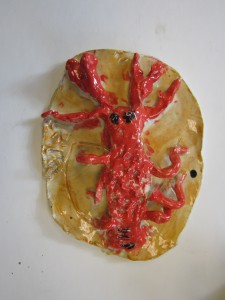
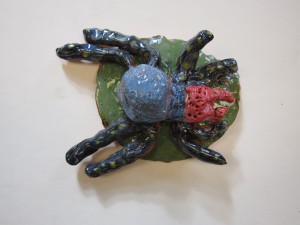
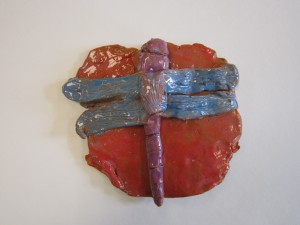
|
Relationships in Space, Texture, and STEAM:
- What kind of habitat will you build for Blandings turtles?
- What kinds of textures will you make for different parts of the habitat?
- How big will the turtle(s) be compared to the habitat?
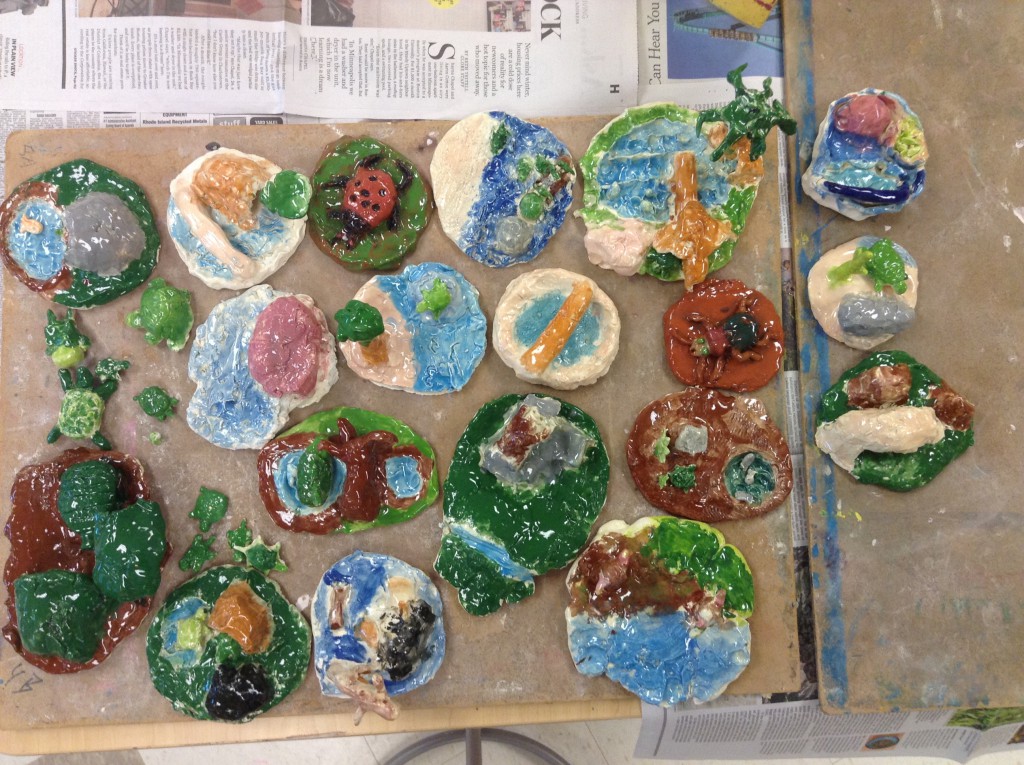
|
|
Fifth Grade
Slab Construction-Islands:
- Which parts of your island will be high?
- Which parts of your island will be low?
- What kind of terrain is on your island?
- How will you make textures in your clay to show the terrain?
- What kinds of plants live on your island?
- Will your island have any animals or people on it?
- Will there be any buildings or man-made structures on your island?
Listen to Student Reflections 5W AudioBoom Clay 2015

|
|
Figures: Gesture, Relationships in Space/Collaboration
- What kind of game or activity can people be doing together?
- How much space will there be between the figures?
- How will the figures bend and move?
|
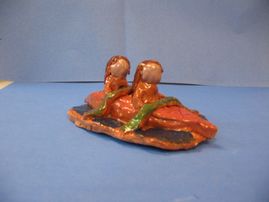

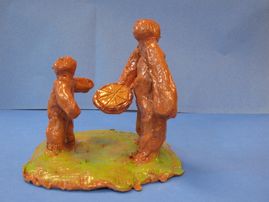
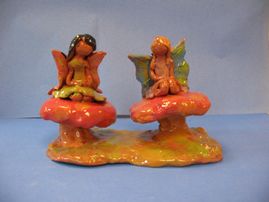

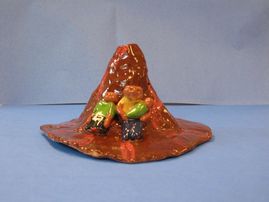
5th Grade Stop Motion Clay Animation 2018-19
5A Stop Motion Clay Animation 2017-18
5G Stop Motion Clay Animation 2017-18
5L Stop Motion Clay Animation 2017-18
5W Stop Motion Clay Animation 2017-18
5A Clay Team 2016
5G Clay Teams 2016
